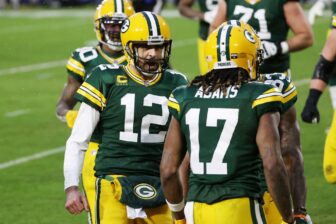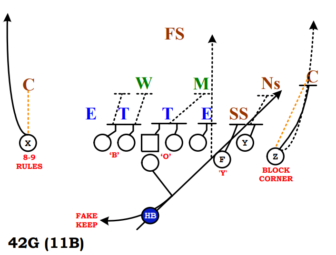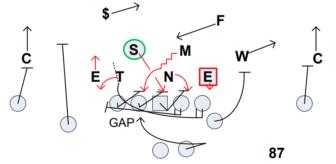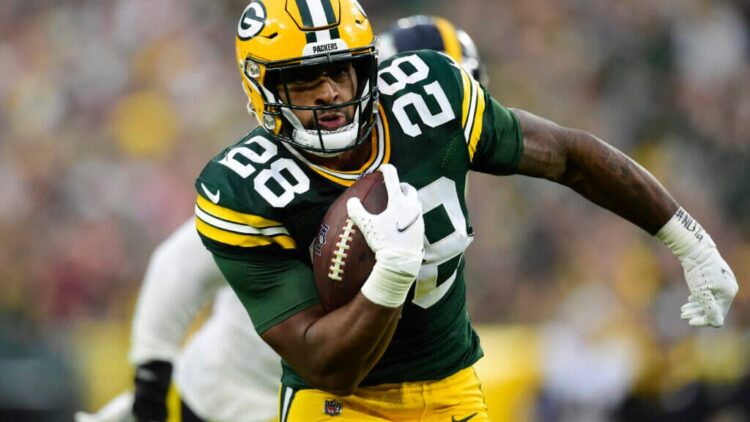
AJ Dillon is quickly becoming a mainstay in the Packers offense. He’s creating 2.4 yards after contact per attempt, displays great vision, has shown that he’s impactful in the pass game, and is a versatile gap and zone scheme runner.
Dillon’s one-cut, physical style of running has been a problem for teams over the last month. While a lot of people might not think of bigger backs as being zone runners, Dillon is more than capable of fitting in the Packers’ zone-based run game.
Vision in zone scheme
On outside zone, running backs aim for the ghost tight end. What that means is that they have to aim for where the tight end would be whether a tight end is present or not. The main difference on wide zone, on the other hand, is that the running back will take a tighter track to the inside leg of the tackle. That creates less of an emphasis on getting outside, but still gets horizontal flow from the defense.
The back must stay on their track for three steps. That’s how long they have to read the defense and decide where they’re going to cut. In outside and wide zone, running backs read outside-in on the first-level defenders. In this case, AJ Dillon is reading Markus Golden on the edge before shifting inside to #94 Zach Allen at the defensive tackle spot.
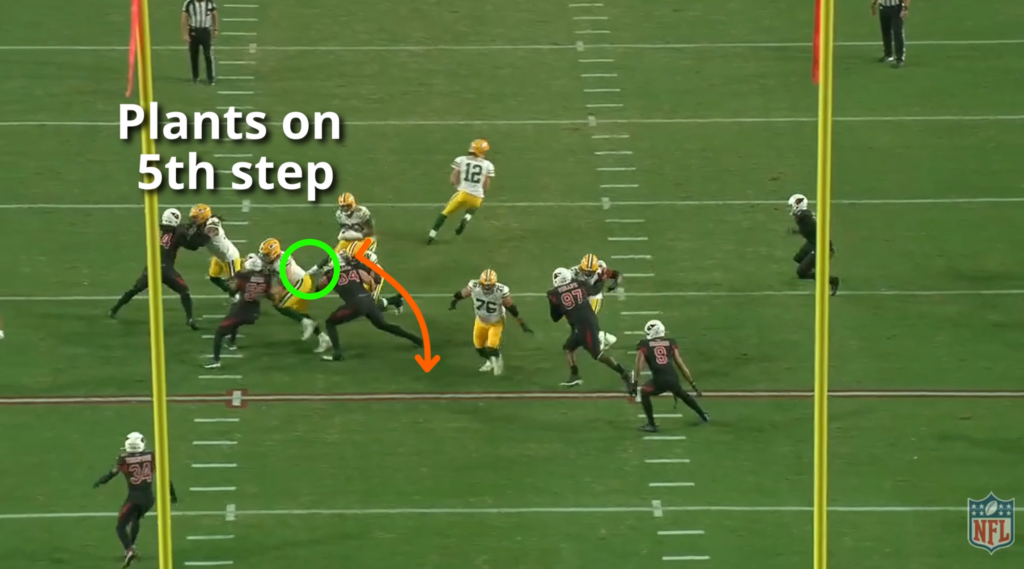
On his third step, AJ Dillon has diagnosed that Golden is holding the edge and Dillon now knows that he will not be going outside. At that point, he’s shifting his eyes inside to determine the leverage of the tackle. With the tackle also leveraging outside, Dillon has two more steps to cut off of the block by his center. By pressing his track outside for his first three steps, Dillon has forced the linebacker to come up and fit to the play-side. That creates a cutback lane off the center’s block and Dillon plows ahead for a gain of five yards.
Outside zone rarely actually gets the outside, but, because of the track the running back is taking, it allows them to accelerate and stress the edge if the defense spikes or loses contain. That’s what happens here, as the defensive end spikes inside. As soon as Dillon sees that, he knows he’s going to stay on his track and force the defense to tackle him at an angle.
Outside zone from shotgun
While the Packers and AJ Dillon average 1.5 yards less when running from shotgun, the same zone rules apply. He still has his three steps to decide, still has to take that outside track, and still has five steps to make his cut. Dillon is so impactful as a runner because of his body control and vision. That’s a 247 pound man that is going from a dead sprint outside to planting and getting vertical within two steps. That’s the power of outside zone, too. Backs that are disciplined and efficient with their feet and track force linebackers to overflow. That leads to defenders tackling at an angle instead of head on. For a guy that has the power that AJ Dillon has, he’s simply not going down with an arm tackle.
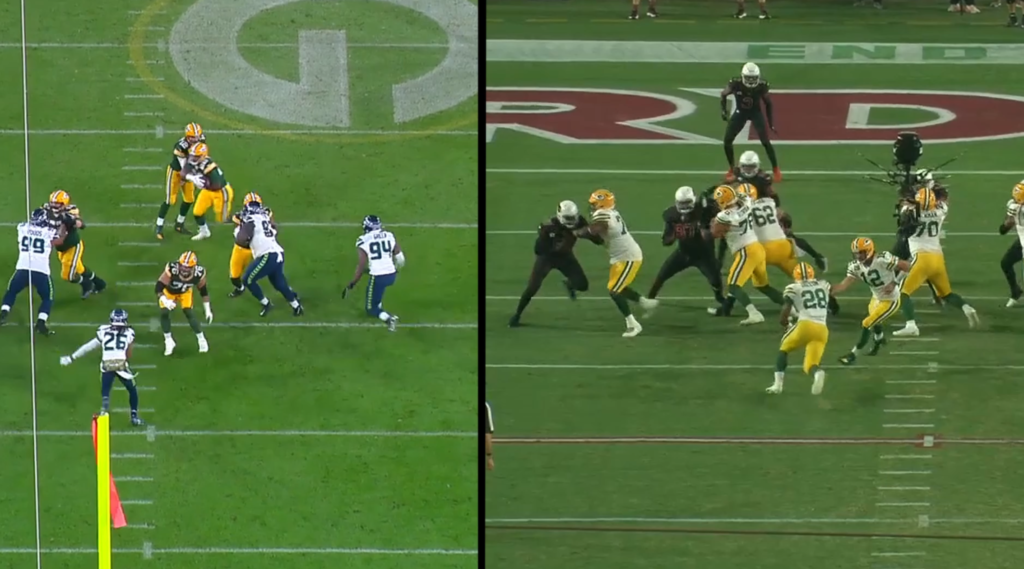
While running out of shotgun, is functional, there are some drawbacks to it and the Packers have paid for running out of the gun a number of times in short down and distances. For some reason, they love 3rd down runs from shotgun. Especially when running outside or wide zone, running while being offset to the quarterback forces the running back’s hips to be pointed towards the sideline and not downhill. You can see an example of that here. On AJ Dillon’s third step in both outside zone from under center and shotgun, there’s a drastic difference between the direction of his hips. As a result, that reduces his ability to more smoothly transition into being North and South. Running from shotgun gives better vision, but blocks have to be sustained longer and it changes the hips of the running back.
Outside Zone
Gap scheme running
The Packers will predominantly run zone with Dillon, but they’ll also sprinkle in some Guard/H counter as a change of pace. Instead of conventional counter where the guard and tackle are pulling, G/H counter uses the guard and the H-back. That H takes the spot of the tackle and wraps through the kickout from the guard. Dillon is a disciplined runner. He is a natural fit for gap-scheme runs like counter and duo.
Green Bay will add wrinkles like switching the roles, cutting instead of kicking out, or bringing the wrapping player from different spots on the field.
Counter
Impact in passing game
AJ Dillon has also shown consistent hands in the passing game. The Packers have dialed up a number of screens for him, but he also runs Texas routes, seams, or flares. Some of the catches he’s made are not easy ones, either. Especially for a guy that’s as big as he is. He’s had to high point catches, pluck balls off the ground, and has made out-of-frame catches on a consistent basis. It’s just one extra layer for defenses to have to defend and worry about. That’s a lot of beef out on the edge when the Packers get him the ball on screens and he’s proven to be really good at reading and running them, though he lacks the home run speed that Aaron Jones has.
Final thoughts
AJ Dillon is eating into Aaron Jones’ touches for a reason. He has all the vision you want out of a zone runner, the physicality and short yardage ability of a bigger back, and soft hands on the perimeter. With Aaron Jones going down for a couple weeks with an MCL sprain, don’t expect the Packers to get away from their zone and boot game. Dillon is dangerous with the ball in his hands – maybe not to score on a long touchdown, but he will definitely ruin a defender’s day.

